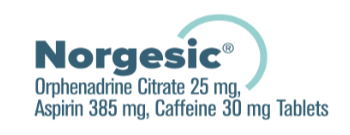Trending Research and Innovation in Pain Management

Logan Anderson, Pharm.D., RPh
Galt Pharmaceuticals Medical Affairs Fellow
Emerging Trends
In a study of 90,769 US adults, chronic pain increased by 18% and high-impact chronic pain (HICP) increased by 13% compared to pre- COVID-19 pandemic reports (2019-2023). Chronic pain was described as pain occurring at least every other day for 3 or more months while HICP was described as chronic pain that limits activities at least every other day. Long COVID was found to explain roughly 13% of the increase in all chronic pain from 2019 to 2023. Other potential contributors include increases in the prevalence of obesity, depressive symptoms, and anxiety as well as increased demand on healthcare institutions affecting treatment outcomes.1
Research Advancement
Sphingosine 1-Phosphate (S1P) receptor antagonists (i.e., ozanimod and ertrasimod) prevent lymphocytes from leaving lymph nodes en route to the central nervous system and intestine. This mechanism has been found useful for the treatment of multiple sclerosis and ulcerative colitis.2,3 A recent study by Ginacotti et al. has demonstrated that S1P receptor 1 activation contributes to neuropathic pain. Administration of ozanimod into the rostral ventral medulla – a key structure of descending pain modulation – reduced behavioral hypersensitivities by incorporating noradrenergic and serotonergic inhibitory pathways.4 This study encourages further research into the use of S1P receptor antagonists for the treatment of neuropathic pain.
Novel Targets
Cortical astrocytes were identified as a potential target for migraine treatment. Bree et al. evaluated the effect of activating visual cortex astrocytes in rats. They observed migraine-like behaviors and prolonged meningeal nociceptor discharge which was capable of being blocked by inhibiting CGRP signaling.5
New Approvals
Journavx (suzetrigine) was recently approved in January of this year as the first sodium channel blocker for the treatment of moderate to severe acute pain in adults.6 Suzetrigine selectively inhibits Nav 1.8 voltage-gated sodium channels to block ascending pain signals from peripheral sensory neurons.7 The Institute for Clinical and Economic Review (ICER) assessed the effectiveness and value of suzetrigine in February. The ICER panel of experts found that there was adequate evidence for the benefit of suzetrigine over non-systemic therapies but determined that there was not adequate evidence for the benefit of suzetrigine over opioids or oral NSAIDs in addition to non-systemic therapies. The ICER panel was divided on the valuation of suzetrigine. The majority of panelists stated that suzetrigine had intermediate long term value with the lack of long-term safety data and ambiguous phase III results being a point of discussion.8
References
- Zajacova, Annaa,*; Grol-Prokopczyk, Hannab; Nahin, Richard L.c. Pain among US adults before, during, and after the COVID-19 pandemic: a study using the 2019 to 2023 National Health Interview Survey. PAIN ():10.1097/j.pain.0000000000003764, August 5, 2025. | DOI: 10.1097/j.pain.0000000000003764
- Lexi-Drugs. UpToDate Lexidrug. UpToDate Inc. https://online.lexi.com. Accessed August 25, 2025.
- Lexi-Drugs. UpToDate Lexidrug. UpToDate Inc. https://online.lexi.com. Accessed August 25, 2025.
- Giancotti, Luigino Antonio; Squillace, Silvia; Chen, Zhomou; Lauro, Filomena; Li, Ying; Salvemini, Daniela*. Ozanimod, a functional sphingosine-1-phosphate receptor 1 antagonist, restores brainstem descending pain pathways in murine models of neuropathic pain. PAIN ():10.1097/j.pain.0000000000003770, August 4, 2025. | DOI: 10.1097/j.pain.0000000000003770
- Bree, Dara; Zhao, Jun; Stratton, Jennifer; Levy, Dan*. Cortical astrocyte activation triggers meningeal nociception and migraine-like pain. PAIN ():10.1097/j.pain.0000000000003737, July 30, 2025. | DOI: 10.1097/j.pain.0000000000003737
- FDA Approves Novel Non-Opioid Treatment for Moderate to Severe Acute Pain. U.S. Food and Drug Administration. Published January 30, 2025. https://www.fda.gov/news-events/press-announcements/fda-approves-novel-non-opioid-treatment-moderate-severe-acute-pain
- Lexi-Drugs. UpToDate Lexidrug. UpToDate Inc. https://online.lexi.com. Accessed August 25, 2025.
- Nikitin D, Rind DM, McQueen B, et al. The effectiveness and value of suzetrigine for moderate to severe acute pain: A summary from the Institute for Clinical and Economic Review’s Midwest Comparative Effectiveness Public Advisory Council. Journal of Managed Care & Specialty Pharmacy. 2025;31(7):729-734. doi:https://doi.org/10.18553/jmcp.2025.31.7.729
The information provided is for general informational and educational purposes only. It is not intended to serve as medical advice, diagnosis, or treatment. The content is written by a licensed pharmacist and reflects general knowledge and expertise in the healthcare field, but it is not a substitute for professional medical advice from a qualified healthcare provider.
Always consult your physician, pharmacist, or other qualified healthcare professional before starting, stopping, or modifying any medication, treatment, or health regimen. Individual health conditions and needs vary, and only a healthcare professional can provide personalized advice tailored to your specific situation.
While we strive to ensure the accuracy and currency of the information presented, medical knowledge is constantly evolving, and errors or omissions may occur. The blog’s content does not cover all possible uses, precautions, side effects, or interactions of medications or treatments. Reliance on any information provided is solely at your own risk.
Links to external websites or resources are provided for convenience and do not imply endorsement or responsibility for their content.






